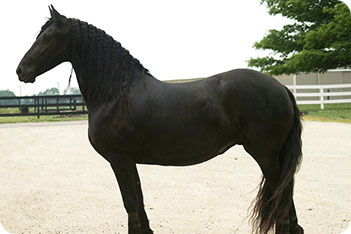
Horse Competions
Endurance Riding
From: Horse Competitions

Long Distance Riding
Long distance riding is a very competitive sport in which horse and rider are required to cover a set distance which can be anything from twenty five miles (forty kilometers), to one hundred miles (one hundred and sixty kilometers). In competitions under the Federation Equestre International (FEI) there are star rankings which dictate the length that is to be covered. In a one star event a distance of 40 to 79 km is covered, and this goes up to 160 kilometers for a four star event which is completed in around ten to twelve hours.
History
The sport was first developed in the USA as an endurance test for cavalry mounts who often had to cover many miles within a few days, and were tested over a five hundred mile five day test. When the pony express ride was ridden in less than twenty four hours from Nevada to California by Wendell Robie in the 1950's the endurance challenge was set.
Competitions
Recognised FEI competitions today include the Western States Trail Ride where one hundred miles has to be covered, and there are also the Endurance World Championships, held every four years in the same year as the Olympics. The European Endurance Championships are held every two years as well as the World Equestrian Games (WEG).
Long distance riding can be split up into endurance riding and trail riding. In an endurance event the horse and rider who can complete the distance the quickest without over stressing the horse wins. In a trail ride there is no speed/time requirement and it is simply a case of completing the distance without the horse getting overly stressed.
In 1982 when endurance riding became an official FEI discipline there were only four events held a year, but due to its increasing popularity over the years there are now 300 rides a year
Requirements
Endurance riding takes a great deal of skill, to judge the speed and pace required to cover several miles without overtiring the horse. Map reading skills are also important not only so that you don't get lost but also so that you can locate the various check points (also called vet gates) which are positioned roughly every 40 kilometers along the way. These check points are designed to check the horses health and condition especially for dehydration and heart rate before being allowed to continue with the ride, so that any horse who is struggling with the distance can be withdrawn.
Team Of Assistants
A good team of helpers are required to meet you at the various checkpoints to assist the rider in checking the horse over for general health, to assist in cooling the horse down, checking tack, replacing shoes and helping with anything else that may come up. A spare supply of tack such as numnahs, girths, stirrup leathers and irons as well as shoes, bucket, sponges, water and first aid kit are all amongst the essentials that will need to be at every check point.
The Horse
Needs to be of a calm, relaxed and confident manor, willing by nature and fit enough for the length of ride being undertaken. The horse needs to have a flowing effortless walk, trot and canter which will assist it to cover many miles without overstressing their limbs.
Equipment
A well fitting lightweight saddle with a comfortable bridle are essentials. Western saddles are popular for their comfort as are synthetic lightweight English saddles.
Sheepskin nose and headpieces are often used on the bridle along with sheepskin girths for the saddle which help to avoid rubbing, and sores, and are easy to change during the ride if required. For the rider a saddle pad is a favorite along with stirrup toe caps to allow the rider to wear footwear that is comfortable and safe to both ride and run in if necessary. Hard hats which offer ventilation are essentials for the long distance rider.
After The Event
Your horse will need to be monitored for dehydration after the event and the addition of the correct balance of electrolytes into the horses feed or water before and after the event is recommended. Your horse will need to be thoroughly washed down and cooled off with a thorough check of the horses limbs for any knocks, swellings or bruising that may have occurred during the ride, and you will need to monitor the horse carefully afterwards t as sometimes injuries or upsets can take a few hours to fully show themselves.